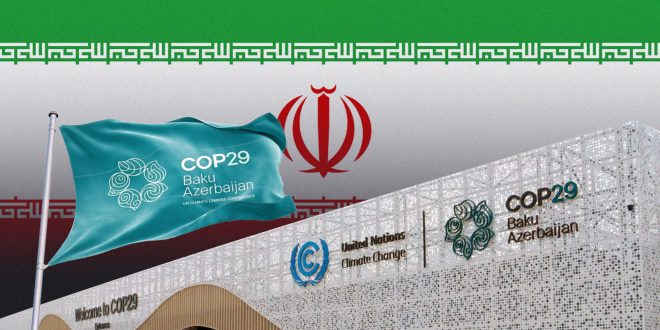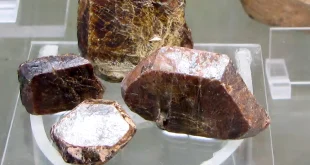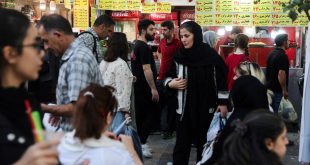Iran is facing serious environmental challenges exacerbated by climate change, which threaten its long-term sustainability. Rising temperatures, acute water shortages, and increasing frequency of natural disasters such as droughts and floods are placing mounting pressure on the nation’s ecosystems and agriculture. Iran’s heavy reliance on gas and oil, combined with deteriorating environmental conditions, raises concerns about the country’s future viability. Desertification and water resource depletion pose significant threats to food security and the livelihoods of millions who depend on agriculture.[1]
The 29th Conference of the Parties to the UN Framework Convention on Climate Change (COP29), which took place in Baku, Azerbaijan, from November 11 to 22, 2024, served as critical forum for international climate action. Securing climate finance and pushing nations to adopt more ambitious plans for reducing greenhouse gas (GHG) emissions were two key priorities of the summit.[2] At COP29, Iran, the world’s eighth-largest CO2 emitter, faced both opportunities and challenges. Its reliance on fossil fuels and the impacts of international sanctions[3] complicate its position, particularly in relations to climate funding and carbon reduction commitments.
Climate change increasingly affects Iran’s economy, society, and national security. Resource constraints are fueling social instability, while critical sectors such as agriculture and oil are under threat. These challenges have shaped Iran’s energy strategy at COP29 as well as its domestic policies.
Temperature and Precipitation Changes
The rate at which Iran’s climate is warming is alarming. By 2050, average temperatures could rise by an additional 2.6°C, double the global average. Temperatures have already increased by 0.7°C. With an average annual precipitation of only 250 millimeters, Iran’s landscape is predominantly desert or semi-arid, making these developments particularly concerning.[4] Precipitation is expected to drop by 35% over the coming decades, placing immense pressure on Iran’s already scarce water resources, especially in areas already grabbling with severe water shortages. These forecasts underscore the urgent need for comprehensive plans addressing energy production, water management, and agricultural sustainability.[5]
Water Scarcity and “Water Bankruptcy”
Since the early 2000s, Iran’s water crisis has worsened, affecting about 35% of the population. Experts warn about “water bankruptcy”, as the sustainable supply from rivers and aquifers is outstripped by growing demand.[6] Iran’s cities, industries, and agriculture face unprecedented stress due to excessive water use, rising temperatures driven by climate change, and decreasing rainfall. Immediate improvements in water management, conservation, and climate adaption are critical to stabilizing Iran’s environmental and economic future.[7]
Environmental Degradation and Desertification
Iran’s environmental vulnerabilities are exacerbated by climate change, particularly through increased desertification. More than 100 million hectares of farmland and grazing land are at risk due to unsustainable farming practices, declining rainfall, and rising temperatures.[8] Desertification is drying out ounce-productive land, endangering the livelihoods of millions of people. The country’s water crisis is also deepening, with droughts occurring more frequently and with greater severity.[9]
Sea levels pose additional threats, particularly in coastal regions along the Arabian Gulf and Caspian Sea. Saltwater intrusion in these regions threatens infrastructure, agriculture, and the displacement of coastal populations. Furthermore, land degradation and changing wind patterns are increasing the frequency of sand and dust storms, worsening air quality and adversely affecting human health, especially in metropolitan areas. Action must be taken immediately to mitigate and adapt to the escalating effects of climate change given these growing environmental challenges.[10]
Agricultural and Economic Effects
Climate change is placing immense pressure on Iran’s economy and agricultural sector, posing serious risks for food security and environmental sustainability. Agricultural yields in regions currently experiencing water scarcity will be directly impacted by rising temperatures, intensifying droughts and further limiting water availability for irrigation, and reducing agricultural production by 10% for every degree of temperature increase. This threatens not only the livelihoods of farmers but also the country’s overall food security.
Additionally, altered weather patterns, reduced rainfall, and more frequent extreme events like floods and droughts, are disturbing Iran’s ecosystems and biodiversity. These changes upset the delicate ecological balance that supports agriculture, wildlife, and rural communities, placing native plant and animal species at risk. This ecological deterioration significantly impacts the rural livelihoods and food systems, further compounding the challenges posed by climate change.[11]
Climate Migration
An estimated 70% of internal migration in Iran is attributed to shifting climate conditions. Tens of thousands of Iranians are being forced to abandon rural areas as traditional farming methods become unsustainable due to rising temperatures and severe water shortages in arid and semi-arid regions. In search of better living conditions and job opportunities, many farmers and their families are relocating to cities or more hospitable areas. However, this migration exacerbates challenges such as infrastructure strain, resource scarcity, and economic instability in already overcrowded urban centers. This trend is expected to accelerate by the ongoing climate crisis, creating resource-related and socioeconomic pressure in both rural and urban areas. To accommodate the expanding urban population and alleviate stress on both urban and rural communities, this demographic shift underscores the urgent need for sustainable urban planning and robust resource management.[12]
GHG Emissions
Iran is one of the Middle East’s largest emitters of GHGs, significantly contributing to global warming. Reliance on oil and natural gas as primary energy sources makes fossil fuel dependency a major factor in Iran’s emissions. The industrial sector, particularly cement and petrochemicals, is another major source of GHG emissions. Iran faces challenges transitioning to cleaner energy despite its efforts to diversify energy sources. This is due to economic sanctions which hinder access to funding and renewable technologies. Deforestation and inefficient farming practices further elevate carbon emissions. Rising GHG levels intensify Iran’s environmental issues, such as severe heat, droughts, and air pollution, posing serious threats to the economy and public health.[13]
Renewable Energy in Iran: Climate Challenges and the Path to Ambitious Targets
Despite these challenges, Iran has significant potential for renewable energy, particularly in solar and wind power. High levels of solar radiation and approximately 300 sunny days per year make the country well suited for solar energy development. Additionally, northern and eastern regions offer significant potential for wind power generation.[14] Recognizing these opportunities, the Iranian government has set ambitious goals, including increasing renewable capacity to 50 GW within the next five years and generating 10% of electricity from renewable sources by 2025. These targets reflect a commitment to transitioning to a more sustainable energy mix.[15]
However, Iran’s renewable energy capacity remains limited. As of 2024, only 879 MW, less than 1% of the nation’s total power generation capacity, comes from renewable energy sources. Of this, 58% is from solar power, followed by wind (31%), small hydropower (9%), and minimal contribution from expansion turbine plants and biomass (1% each).[16] This gap between Iran’s renewable potential and actual deployment highlights the need for significant investments[17] in infrastructure, technology, and supportive policies to scale up renewable energy generation and integrate effectively it into the national grid.[18]
Iran and the Paris Climate Agreement
Iran’s stance on the Paris Climate Agreement (2015) is shaped by complex internal dynamics and external pressures, reflecting its economic dependencies and geopolitical challenges. While Iran signed the Paris Agreement in April 2016 and received parliamentary approval from in November of the same year, final ratification remains blocked by the Guardian Council, which wields veto power and has proposed revisions that stalled further progress. A central issue for Iran is the impact of international sanctions, which have restricted access to essential green technologies and financial resources from Western nations, hindering its ability to meet ambitious climate goals. Iran has consistently maintained that it will only consider ratifying the Paris Agreement if these sanctions are lifted, using this stance as a diplomatic tool to negotiate economic relief.
Iran-China Economic Partnership and Its Impact on Energy Transition
Despite several challenges, Iran’s growing partnership with China is increasingly shaping its energy reform agenda. This collaboration strengthens Iran’s reliance on fossil fuel exports, especially through sustained oil shipments to China, while also presenting opportunities for the development of renewable energy. China’s leadership in renewable energy could accelerate Iran’s transition, but the nation’s continued reliance on oil may make it more difficult for its energy strategy to diversify. Cooperation with China gives Iran access to cutting-edge knowledge and technology that could hasten its energy transition. Furthermore, Iran’s energy infrastructure will considerably improve and its ability to generate renewable energy will be further strengthened with the construction of two joint ports, designed to support both fossil fuel and renewable energy projects.[19]
Commitment to Renewable Energy Cooperation
In 2024, China and Iran reaffirmed their commitment to strengthening their renewable energy cooperation. During a visit to China, Iranian Energy Minister Abbas Ali-Abadi emphasized Iran’s renewable energy potential and called for more Chinese investment. As a global leader in biomass, wind, solar, and hydropower, Chine play a pivotal role in the development of renewable energy projects worldwide, especially through engineering, procurement and construction (EPC) contracts. This expanding partnership is demonstrated by notable projects like the 10-megawatt (MW) solar farm in Damghan, which started operations in February 2023. Additionally, China’s US$7 million commitment to a power plant in Iran’s Maku Free Zone (West Azerbaijan Province, Iran) demonstrates its ongoing interest in supporting Iran’s renewable energy goals.[20]
China’s Leadership in Global Green Energy and Its Impact on Iran
China’s partnership with Iran is significantly influenced by its leadership in the global renewable energy market. As the world’s largest producer of solar cells and wafers, China provides Iran with access to cutting-edge technologies that can accelerate its energy transition. China solidified its position as a global leader in renewable energy in 2023 when it installed a record-breaking 263 gigawatts (GW) of solar power. This dominance not only sets international standards, but also equips Iran with the tools needed to advance its own energy transformation. Through this partnership, China expands its influence in the Middle East and assists Iran in embracing the global green energy revolution.[21]
Cost-Effectiveness of Chinese Clean Energy vs. Other Global Options
China’s role as a top supplier of renewable energy solutions is a crucial aspect of Iran’s energy strategy. Iran has significant solar and wind energy potential due to its advantageous geographic location. International sanctions, however, limit foreign investment, making China a particularly attractive partner. Despite challenges such as underdeveloped infrastructure and the need for substantial investment, Iran has an opportunity to diversify its energy mix by leveraging China’s cost-effective renewable energy options. Diversification is essential for securing a more sustainable energy future and mitigating risks associated with volatile fossil fuel prices.[22]
China’s Clean Energy Dominance vs. Iran’s Technological Gap
Iran benefits from China’s leadership in clean energy, yet several obstacles prevent it from leveraging this collaboration. Western sanctions significantly restrict Iran’s access to essential clean energy technologies and deter Chinese companies from investing in Iran. Consequently, Iran struggles to acquire the advanced technologies necessary to accelerate its energy transformation.
Challenges in the Iran-China Economic Partnership
- International Sanctions: The primary barrier preventing Iran from accessing crucial clean energy technologies from China is international sanctions. The threat of secondary sanctions discourages Chinese companies from making significant investments in Iran, hindering the nation’s progress in renewable energy and fostering a climate of uncertainty for potential investors.[23]
- Lack of Legal Framework: Investments and partnerships are complicated by the lack of a strong legal framework for economic cooperation between China and Iran. Uncertainties surrounding contract enforcement, dispute resolution, and intellectual property protection create high risk for investors, deterring Chinese firms from making significant investments.[24]
- Poor Infrastructure: A major obstacle to large-scale renewable energy projects in Iran is the lack of adequate infrastructure. International investors, particularly Chinese companies, are discouraged from committing to large-scale projects since Iran’s current infrastructure is often cannot support the deployment of advanced renewable energy technologies.[25]
- Economic Imbalance: Iran and China have an asymmetrical economic relationship; Iran’s main export to China is oil at a discounted price. Yet, China has failed to meet Iran’s demands for significant investments, particularly in renewable energy. Iran’s negotiating position for technology transfer and clean energy investment is undermined by this economic inbalance.[26]
- Competition with Other Markets: China is less inclined to make significant investments in Iran due to its strategic focus on other Middle Eastern countries, such as Saudi Arabia and the United Arab Emirates (UAE), which provide more stable economic conditions and larger profit margins. This competitive dynamic reduces China’s inclination to pursue large-scale projects in Iran, despite its potential.[27]
Implications for Energy Transition
Limited Technology Access: International sanctions continue to limit Iran’s access to advanced renewable energy technologies. While China is the world’s top producer of wind turbines, solar panels, and other renewable technologies, Chinese companies remain reluctant to share these advancements with Iran due to potential political repercussions and sanctions.[28]
Stalled Renewable Projects: Many of Iran’s renewable energy projects have stalled or remain underfunded due to broader geopolitical issues, such as sanctions and economic volatility. Despite ongoing discussions and agreements with China, the lack of substantial investment in these projects hinders Iran’s progress toward achieving its renewable energy targets. [29]
Fossil Fuel Dependence: Iran’s transition to renewable energy is undermined by its continued reliance on fossil fuels. Despite the nation’s enormous oil and gas reserves, this reliance impedes the adoption of cleaner, alternative energy sources. Political instability and economic sanctions further exacerbate the situation, making it difficult for Iran to diversify its energy portfolio and sure a sustainable future.[30]
COP29 Climate Deal: Too Little, Too Late, Say Poorer Nations
At the conclusion of COP29, developing nations voiced significant dissatisfaction, arguing that the US$300-billion climate funding commitment for 2035 was insufficient. While this figure represented an increase from the existing US$100 billion, many countries felt it fell short of addressing the magnitude of the climate crisis. India criticized the agreement for failing to meet the urgent needs of the most vulnerable nations.
The conference highlighted China’s growing influence in climate finance, underscoring its more active role in supporting developing countries. At the same time, its exposed the widening gap between wealthy and poorer nations in addressing climate challenges. As China assumes a larger role, the global balance of power in climate negotiations continues to shift.[31]
Iran and COP29
Iran’s participation in COP29 demonstrated its commitment to addressing climate change while highlighting the major obstacles the country faces, particularly those imposed by international sanctions. Iran sought to showcase its potential contributions to global climate action, but its efforts were shaped by its reliance on fossil fuels, limited access to resources, and intricate complex regional politics.
Sanctions and Climate Action Commitments
At COP29, Iran reiterated its previous pledge to cut GHG emissions by 4% unconditionally, or up to 12% contingent on sanctions relief, as it arrived without a newly outlined climate action plan. Despite this commitment, meaningful progress remains elusive. Iranian officials stressed that U.S.-led sanctions have severely restricted access to financial resources and critical technologies, making it nearly impossible to implement renewable energy projects and achieve emissions reductions.[32]
Iran’s delegation framed sanctions as a global barrier to climate equity at COP29. Despite being a major emitter, Iran argued that the restrictions not only hinder its ability to meet climate commitments but also leave it disproportionately vulnerable to the adverse effects of climate change. Iranian representatives called for international cooperation to lift sanctions, demanding equitable access to international climate funds and technology transfer. By presenting sanctions removal as a prerequisite for meaningful contributions to global sustainability, Iran aimed to garner international support for its position.[33]
In addition to addressing global climate challenges, Iran has the opportunity at COP29 to tackle urgent regional environmental issues, such as like dust storms and transboundary sandstorms. Iran has serious environmental and health concerns because of these phenomena, which are made worse by desertification and poor land resource management in nearby nations. By encouraging cooperative strategies to address these issues, Iran may improve regional stability, increase its climate resilience, and fortify diplomatic ties.[34] However, Iran’s strong reliance on fossil fuel exports, which accounted for 18% of its GDP in 2021, remains a significant obstacle to achieving its climate goals.
As of 2024, oil contributes one-fourth of Iran’s GDP, underscoring the central role of oil in driving the nation’s economic output and overall financial stability. However, this dependency also makes the economy highly vulnerable to fluctuations in global oil prices and external market dynamics, emphasizing the urgent need for diversified revenue streams to support sustainable economic growth.[35]
Fossil Fuel Dependence and Economic Constraints
Iran’s entrenched reliance on fossil fuel income continues to be a major barrier to its climate ambitions. Petroleum exports generated $42.6 billion in revenue as of 2022, with oil’s share of GDP rising by 14.7% during the 2023-2024 fiscal year due to tighter international markets. This economic dependency reflects the structural dominance of fossil fuels in Iran’s financial system, complicating efforts to transition to renewable energy.[36]
Sanctions further exacerbate this reliance, forcing Iran to consume more fossil fuels domestically, which increases carbon emissions and reduces investment in clean energy technologies. While Iran possesses abundant solar and wind resources to support renewable energy generation, technological and financial obstacles impede its progress toward a greener economy. These limitations not only delay the shift to renewable energy but also deepen the nation’s financial dependence on oil and gas revenues.[37]
Conclusion
While geopolitical challenges, competition from regional actors, and the enduring impact of international sanctions complicate the Iran-China commercial partnership, it holds significant potential to advance Iran’s energy transformation. To make substantial progress in renewable energy initiatives, both nations must successfully navigate these obstacles and align their objectives.
Iran’s participation at COP29 demonstrates both its opportunities and its limitations in achieving its climate goals. The absence of President Masoud Pezeshkian hindered efforts to secure climate funding and advanced renewable technologies. The head of Iran’s Environmental Organization, Shina Ansari, reiterated that sanctions continue to impede environmental progress and that Iran’s heavy reliancew on fossil fuels complicates its efforts to reduce emissions.[38] Despite raising awareness of regional environmental issues such as dust storms and advocating for the easing of sanctions, Iran made little headway in forging meaningful alliances with Western nation.
China emerged as a significant COP29 partner, offering cutting-edge renewable energy technologies and pursuing greater regional influence. However, sanctions and other geopolitical factors continue to limit Iran’s ability to fully benefit from this cooperation. Alongside other developing nations, Iran voiced dissatisfaction with the US$300 billion climate finance commitment for 2035, arguing that grants and loans fall short of addressing urgent climate needs.
Iran’s engagement at COP29 illustrated how internal and external challenges shape its climate policy. To align its environmental and economic objectives with global sustainability goals, Iran will need to implement significant internal reforms and foster regional cooperation. While China’s leadership in clean energy offers Iran an opportunity for transition, barriers such as Western sanctions, inadequate infrastructure, unclear legal frameworks, and market dynamics prevent the full realization of this potential. Overcoming these challenges will be critical to achieve its renewable energy ambitions and contribute meaningfully to global climate efforts.
[1] Shirin Hakim, Iran’s Environmental Challenge, CSIS, accessed [insert date], https://www.csis.org/analysis/shirin-hakim-irans-environmental-challenge.
[2] COP29: The UN Climate Change Conference, accessed [insert date], https://climatepromise.undp.org/news-and-stories/cop29-un-climate-change-conference.
[3] COP29 an Opportunity to Condemn Sanctions on Iran’s Environment, Tehran Times, November 10, 2024, https://www.tehrantimes.com/news/506097/COP29-an-opportunity-to-condemn-sanctions-on-Iran-s-environment.
[4] Climate Profile: Iran, Atlantic Council, accessed [insert date], https://www.atlanticcouncil.org/programs/middle-east-programs/rafik-hariri-center-for-the-middle-east/empowerme/macromena/climate-profile-iran/.
[5] Golnaz Esfandiari and Mohammad Zarghami, “Iran’s Climate Migration Crisis Could Turn Into National ‘Disaster,’” Radio Free Europe/Radio Liberty, accessed [insert date], https://www.rferl.org/a/iran-climate-migrants-crisis/32729538.html.
[6] “In Iran, It’s Scorching Hot and Water Supplies Are Shrinking,” New York Times, July 23, 2023, https://www.nytimes.com/2023/07/23/world/middleeast/iran-heat-water.html#:~:text=Iran%20suffers%20from%20what%20Kaveh,there%20is%20no%20way%20to.
[7] Golnaz Esfandiari and Mohammad Zarghami, “Iran’s Climate Migration Crisis Could Turn Into National ‘Disaster,’” Radio Free Europe/Radio Liberty, accessed [insert date], https://www.rferl.org/a/iran-climate-migrants-crisis/32729538.html.
[8] Iran Becoming More Vulnerable to Desertification, Tehran Times, accessed [insert date], https://www.tehrantimes.com/news/437156/Iran-becoming-more-vulnerable-to-desertification.
[9] Mansouri Daneshvar, M.R., Ebrahimi, M., and Nejadsoleymani, H., “An Overview of Climate Change in Iran: Facts and Statistics,” Environmental Systems Research 8, no. 7 (2019), https://doi.org/10.1186/s40068-019-0135-3.
[10] How Is Iran Affected by Climate Change? UNDP Iran, accessed [insert date], https://www.undp.org/iran/depth.
[11] How Is Iran Affected by Climate Change? UNDP Iran, accessed [insert date], https://www.undp.org/iran/depth.
[12] Golnaz Esfandiari and Mohammad Zarghami, “Iran’s Climate Migration Crisis Could Turn Into National ‘Disaster,’” Radio Free Europe/Radio Liberty, accessed [insert date], https://www.rferl.org/a/iran-climate-migrants-crisis/32729538.html.
[13] Climate profile: Iran, https://www.atlanticcouncil.org/programs/middle-east-programs/rafik-hariri-center-for-the-middle-east/empowerme/macromena/climate-profile-iran/.
[14] Agnivesh Harshan,Go Green with GBO: Iran transitions rapidly to renewable energy despite US sanctions, https://globalbusinessoutlook.com/energy/go-green-gbo-iran-transitions-rapidly-renewable-energy-despite-us-sanctions/.
[15] Iran Plans to Increase Renewables Capacity to 50 GW in Five Years, Energy Central, accessed [insert date], https://energycentral.com/news/iran-plans-increase-renewables-capacity-50-gw-five-years.
[16] Dalga Khatinoglu, “Iran’s Renewables Ambitions Dwindle Amidst Regional Surge,” Iran International, accessed [insert date], https://iranintl.com/en/202403208882?source=share-x.
[17] Roula Khalaf, “Iran Enforces Rolling Power Blackouts as Fuel Shortages Bite,” Financial Times, accessed [insert date], https://www.ft.com/content/72f15b19-8e22-4392-8f07-e2c17bdd6e6f.
[18] Capacity of Iran’s Renewable Power Plants Touches 1,200 MW, Tehran Times, accessed [insert date], https://www.tehrantimes.com/news/501145/Capacity-of-Iran-s-renewable-power-plants-touches-1-200-MW.
[19] Christopher S. Chivvis and Jack Keating, Cooperation Between China, Iran, North Korea, and Russia: Current and Potential Future Threats to America, https://carnegieendowment.org/research/2024/10/cooperation-between-china-iran-north-korea-and-russia-current-and-potential-future-threats-to-america?lang=en.
[20] Iran, China to expand cooperation in renewables, https://tehrantimes.com/news/505544/Iran-China-to-expand-cooperation-in-renewables.
[21] China’s big role in global green transition, https://www.chinadailyhk.com/hk/article/592786.
[22] Iran seeks cooperation with China for developing renewables, Tehran Times, https://tehrantimes.com/news/505401/Iran-seeks-cooperation-with-China-for-developing-renewables.
[23] Umud Shokri, Middle East Institute,Obstacles and opportunities for closer Iranian-Chinese economic cooperation, https://www.mei.edu/publications/obstacles-and-opportunities-closer-iranian-chinese-economic-cooperation.
[24] CHINA-IRAN: A LIMITED PARTNERSHIP, https://www.uscc.gov/sites/default/files/Research/China-Iran–A%20Limited%20Partnership.pdf.
[25] Umud Shokri, Middle East Institute,Obstacles and opportunities for closer Iranian-Chinese economic cooperation, https://www.mei.edu/publications/obstacles-and-opportunities-closer-iranian-chinese-economic-cooperation.
[26] Jonathan Fulton,China doesn’t have as much leverage in the Middle East as one thinks—at least when it comes to Iran, https://www.atlanticcouncil.org/blogs/menasource/china-mena-leverage-iran-houthis-yemen/.
[27] Christopher S. Chivvis and Jack Keating,Cooperation Between China, Iran, North Korea, and Russia: Current and Potential Future Threats to America, https://carnegieendowment.org/research/2024/10/cooperation-between-china-iran-north-korea-and-russia-current-and-potential-future-threats-to-america?lang=en.
[28] Jonathan Fulton, China doesn’t have as much leverage in the Middle East as one thinks—at least when it comes to Iran, https://www.atlanticcouncil.org/blogs/menasource/china-mena-leverage-iran-houthis-yemen/.
[29] Iran & China: A Trade Lifeline, https://iranprimer.usip.org/blog/2023/jun/28/iran-china-trade-lifeline.
[30] Tsvetana Paraskova ,Iran And China Strengthen Oil Ties With 25-Year Strategic Deal, https://oilprice.com/Energy/Crude-Oil/Iran-And-China-Strengthen-Oil-Ties-With-25-Year-Strategic-Deal.html.
[31] Matt McGrath, “Climate Change: Iran Says Lift Sanctions and We’ll Ratify Paris Agreement,” BBC News, November 10, 2021, https://www.bbc.com/news/science-environment-59242986.
[32] Sanam Mahooz, Iran Did Not Give A Plan For Climate Action At COP29, https://www.forbes.com/sites/sanammahoozi/2024/11/22/iran-did-not-give-a-plan-for-climate-action-at-cop29/.
[33] COP29 an opportunity to condemn sanctions on Iran’s environment, https://tehrantimes.com/news/506097/COP29-an-opportunity-to-condemn-sanctions-on-Iran-s-environment.
[34] COP29 an opportunity to condemn sanctions on Iran’s environment, https://www.tehrantimes.com/news/506097/COP29-an-opportunity-to-condemn-sanctions-on-Iran-s-environment.
[36] https://thedocs.worldbank.org/en/doc/65cf93926fdb3ea23b72f277fc249a72-0500042021/related/mpo-irn.pdf
[37] Energy system of Iran, https://www.iea.org/countries/iran.
[38] All countries should have equal access to latest technologies to combat climate change: Iran, https://en.irna.ir/news/85658434/All-countries-should-have-equal-access-to-latest-technologies.





